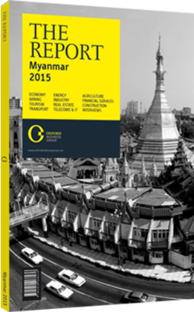Taking steps towards greater regional integration and trade
Myanmar and nine other South-east Asian countries are preparing to ring in the formal birth of the ASEAN Economic Community (AEC) on December 31, 2015, but they are not preparing to celebrate. Instead, they are engaging in a collective soul-searching exercise. At the November 2014 ASEAN summit in Naypyidaw, the crowning event of Myanmar’s chairmanship of the bloc in 2014, ASEAN leaders admitted their uncertainty about what comes next by signing an agreement to develop a post-2015 vision for the bloc. Leaders agreed the ASEAN Coordinating Council, made up of the bloc’s foreign ministers, would establish a high-level task force to develop the vision in time to be approved at the 27th annual ASEAN summit in late 2015.
FIVE ELEMENTS: The AEC will come to life as something of an enigma. On one hand, the AEC represents by far the most ambitious regional integration project since the European Economic Community was established in 1958. On the other hand, at least in its initial stage, the AEC will not be the integrated economic area that South-east Asian governments committed themselves to creating in 2003. Of the five “core elements” laid out in the AEC blueprint agreed in 2007, only one will be more or less achieved by late 2015: free flow of goods. There are no tariffs on most intra-ASEAN trade, and Myanmar, Laos, Cambodia and Vietnam are expected to eliminate most of their remaining duties on intra-ASEAN trade before the end of 2015. However, many non-tariff barriers will remain, and some goods, such as liquor, will remain subject to tariffs.
In Myanmar’s case, intra-ASEAN tariffs were due to be eliminated on 1278 types of goods by the end of 2015, according to the World Trade Organisation, while tariffs would remain in place on 78 types of goods, including arms and works of art. On the other four elements – free flow of services, free flow of investment, “freer” flow of capital and free flow of skilled labour – progress has been significant but spotty. For example, ASEAN has agreed to allow countries to make sweeping exceptions to the free flow of investment goal.
Just like all foreign investors in Myanmar, investors from the ASEAN bloc must receive individual permission to invest, they are not allowed to acquire or buy shares of existing companies except through permitted joint ventures, they can only invest through joint ventures in many sectors, and they are barred from investing in some sectors. Nonetheless, ASEAN treaties are seen as offering some extra legal rights to ASEAN investors in Myanmar, which explains why a large proportion of foreign investors in Myanmar from outside ASEAN choose to invest through Singapore subsidiaries.
TRADE INSIDE & OUTSIDE THE BLOC: The biggest question facing the AEC will be whether to redouble its commitment to internal integration or to focus on deepening ASEAN’s economic integration with its surrounding region. Unlike the countries of Europe, which had a natural motive to integrate due to their intensive trade with each other, the ASEAN bloc’s members mainly trade with countries outside the bloc.
According to a 2014 Asian Development Bank report, intra-ASEAN trade has consistently accounted for just under a quarter of the bloc’s gross trade. That has given impetus to negotiations for the Regional Comprehensive Economic Partnership (RCEP), a planned free trade agreement (FTA) between ASEAN and China, India, Japan, South Korea, Australia and New Zealand, a group that is often called ASEAN+6. Those six countries already have bilateral or trilateral FTAs of varying strength with ASEAN, and the RCEP is intended to make those commitments deeper and more uniform. Around half the RCEP region’s cross-border trade and investment is among members, which would give it a stronger natural impetus to integrate. However, the ASEAN+6 group’s widely varying cultures and strong geopolitical rivalries would give it poor prospects for political integration. RCEP countries are hoping to conclude an agreement by the end of 2015. Still, whichever path ASEAN takes, few doubt regional integration will continue and that obstacles to free flows of trade, capital and movement will continue to gradually come down.
You have reached the limit of premium articles you can view for free.
Choose from the options below to purchase print or digital editions of our Reports. You can also purchase a website subscription giving you unlimited access to all of our Reports online for 12 months.
If you have already purchased this Report or have a website subscription, please login to continue.

